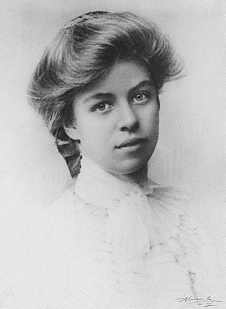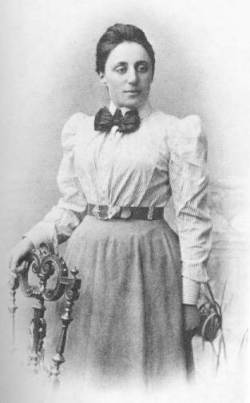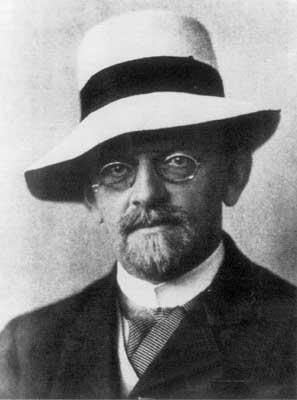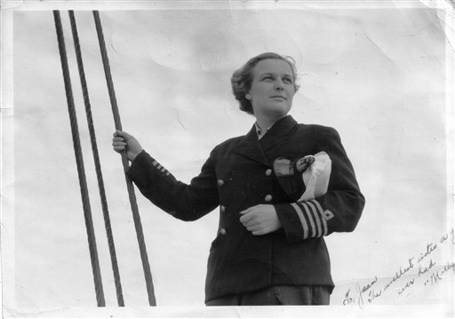 In December of 1938, Lise Meitner received a letter from colleagues in Germany explaining their latest experimental results and questioning what these results could mean. For almost 30 years Lise had worked with Otto Hahn, and later Fritz Strassman, performing experiments related to radioactivity. Although she had begun as Hahn’s assistant without pay, their relationship had evolved to the point where she was the recognized expert in matters related to physics; Hahn was a chemist.
In December of 1938, Lise Meitner received a letter from colleagues in Germany explaining their latest experimental results and questioning what these results could mean. For almost 30 years Lise had worked with Otto Hahn, and later Fritz Strassman, performing experiments related to radioactivity. Although she had begun as Hahn’s assistant without pay, their relationship had evolved to the point where she was the recognized expert in matters related to physics; Hahn was a chemist.
Lise’s nephew Otto Frisch was visiting for the holidays and together they discussed the letter she received. Researchers working on radioactivity had known for some time that one element could change into another, such as radium to polonium in Marie Curie’s experiments. But recently several researchers, when bombarding uranium with neutrons, had been finding elements with smaller atomic weights, almost half the atomic weight of uranium. At the time no one believed that the nucleus of an atom could be split. Hahn and Strassman’s research repeated this result. Meitner realized that this was exactly what was happening and that the power that would result from a chain reaction would be immense. Together she and Frisch worked out the mathematics and she conveyed the information to Neils Bohr who was on his way to the United States for a conference. And the rest as they say is history.
I knew this basic scenario when I began to read about Lise Meitner, but as usual there is more to the story. Lise Meitner was born in Vienna in 1878, the third of eight children born to Philipp and Hedwig Meitner. Philipp, a freethinker and humanist, was one of the first to become a lawyer in Vienna after the professions were opened up to Jews. Hedwig was an accomplished pianist. Their home was filled with music and interesting people. When asked about her childhood Lise remembered all “the unusual goodness of my parents, and the extraordinarily stimulating intellectual atmosphere in which my brothers and sisters and I grew up.”
The educational opportunities available to Lise were similar to those available to Emmy Noether in Germany; they consisted primarily of training that would enable a girl to become a good wife and mother. Public education ended for girls at age 14 and they were not admitted to the universities, so there were no secondary preparatory schools for girls. Lise wanted to study physics and her father agreed to pay for tutors if she would complete a teacher training course first. There were few employment opportunities for men or women in physics, and since Lise had shown little interest in marrying this would give her a way to support herself.

Lise studied constantly and by 1901 when Vienna allowed women to enter the university she was able to pass the entrance examinations at the age of 23. Over the next six years, she completed her doctorate in physics and published several papers related primarily to radioactivity. She also spent a year practice teaching French in a girl’s school to ensure a backup means of support. She was fortunate to study under Ludwig Boltzmann in Vienna. He was an inspiring lecturer and a proponent of atomic theory when it was still controversial. Unfortunately, he died in 1906, but he had inspired Lise to continue studying physics if at all possible.
Looking for a direction to go in her study, Lise applied to work with Marie Curie, but was rejected. In 1907, Max Planck in Berlin agreed to allow her to audit his lectures. Although Planck’s experiences with women in the sciences had been good, he wasn’t really in favor of it. He did, however, welcome Lise into his home where he had twin daughters her age. Here she would find friendship and music during her stay in Germany. One of the friends she made through Planck was Otto Hahn. Hahn was a chemist working on radiochemistry at Emil Fischer’s Chemistry Institute. He needed a physicist to work with and proposed this idea to Lise; she accepted and they began what would be a very productive working relationship.
Under conditions that will sound familiar if you’ve read my previous posts, Lise began working without pay as Hahn’s assistant at the Fischer Institute. The catch – Fischer didn’t allow women in his facility. (One reason was that he had the idea that women’s hair styles were a fire hazard.) He did “compromise” and let her work in a basement room which had been a carpentry shop and had an outside entrance; she was not allowed upstairs and had to use a toilet down the street. This meant that she couldn’t attend lectures or observe Hahn’s experiments. In spite of this, they published several papers together. In 1908, German universities were opened to women and she was finally allowed to enter the building (and they installed a toilet for women!)

Hahn and Meitner worked well together. At first she was deferential to him, but over time she became the recognized leader of their partnership, in the area of physics. In 1912, they moved to the Kaiser Wilhelm Institute for Chemistry, a facility funded by German industrialists. She was still unpaid, but Planck was able to get her an assistant position grading papers at the University with a small salary. Because she was developing a good reputation, the University of Prague offered her a position of associate professor with the possibility for advancement. As a result the Institute finally decided to give her a salary, although at the time still less than Hahn, so she decided to remain in Germany. Finally in 1917, Meitner became the head of her own department of radiophysics at the Institute.
The 1920s and 30s were a “golden era” in physics and Meitner was a prominent part of that. Einstein referred to her as “our Madame Curie” and Wolfgang Paul, a 1989 Nobel Prize winner considered her “a really great scientist” and the superior of Hahn. During this time she and Hahn primarily worked apart, but in 1934, she began experiments that required the expertise of a chemist and Hahn agreed to collaborate again. A number of scientists, including Meitner and Hahn, Enrico Fermi, and Irene Joliot-Curie, began their experimentation with uranium.

Unfortunately, Lise wasn’t competing only with other physicists. In 1933, Jews such as Emmy Noether were expelled from university positions. Although Jewish, Meitner had been baptized a protestant and had an Austrian passport. This, and the fact that the Wilhelm Institute was not a government facility, gave her some protection. This ended however, when Hitler invaded Austria and the Institute was under increasing pressure even from within by Nazi-sympathizers. She now found herself with an invalid passport and a tenuous job. Friends abroad worked feverishly to find her a position and finally in 1938, she slipped over the border into the Netherlands with only a few possessions and moved on to take a position in Sweden.
Hahn and Meitner continued consulting via letter with one secret meeting in Copenhagen in November to plan experiments. These experiments resulted in the letter of December 1938, which she discussed with Otto Frisch. In the letter, Hahn does not draw conclusions and in fact questions the results. Meitner trusted Hahn’s results, he was an excellent chemist, and accepted the obvious conclusion, and that the atom had split. Hahn published his experimental results without drawing conclusions and without crediting Meitner, a move which she understood; he couldn’t officially collaborate with a Jew. She and Frisch published their conclusions soon after along with corroborating experimental results by Frisch. In their paper they coined the term fission to describe what had happened.
Meitner’s recognition of the principle of fission was momentous. When Frisch described the theory to Bohr, he slapped his head and said “Oh what idiots we’ve been.” Understanding the experimental results and knowing that the German’s had the information prompted action within the physics community and then the Allied governments. Meitner was eventually offered a position with the Manhattan Project, which she refused having no desire to work on a bomb.
Everyone in the physics community recognized what Lise had done. Although she wasn’t there for the final experimental results, she had originated the project, gathered the team, worked on it for almost 4 years, and interpreted the final results. Nevertheless, only months after publication Hahn began denying that Meitner had been an important part of the discovery at all. Then in 1944, the Nobel Committee voted secretly to give the Nobel Prize for Chemistry to Hahn, and Hahn alone, for the discovery of nuclear fission. No one disputed that Hahn deserved it, but everyone in the physics community knew that Meitner deserved a Nobel Prize as well.
Lise Meitner continued to work in Sweden until her retirement, when she moved to England to be near her relatives. In spite of the hurt of Hahn’s betrayal, and Lise’s intense criticism of the scientists who had collaborated with the Nazis, they remained friends. Her family didn’t inform her of Otto Hahn’s death in July of 1968 because of her frail condition, and she died later that year in October. Although denied the Nobel Prize, she led a very fruitful life with recognition from her peers and the love of family and friends. Her nephew Otto Frisch had her tombstone inscribed with the statement, “Lise Meitner: a physicist who never lost her humanity.”
Resources
Lise Meitner: A Life in Physics by Ruth Lewin Sime
Nobel Prize Women in Science by Sharon Bertsch McGrayne
Great Physicists: The Life and Times of Leading Physicists from Galileo to Hawking by William H. Cropper
Read about other Famous Women Mathematicians and Scientists.
































